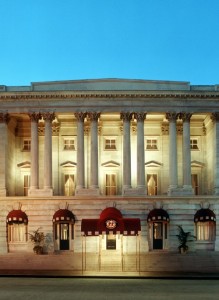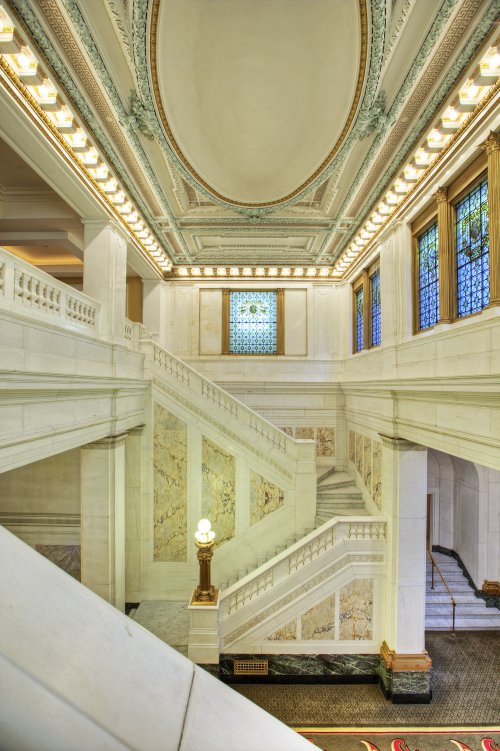Wow. What was this place?
Have you ever walked into one our hotels and thought, “There’s more than meets the eye here”? And perhaps wondered what it might have been before? It turns out lots of Kimpton hotels have had long and vibrant histories as other types of buildings (some dating back 100 years or more) and were chosen to become Kimpton hotels specifically for their unique architectural characteristics. In fact, your guest room during your last stay with us could have been located inside the former general post office (and National Historic Landmark) in Washington, D.C., or an old printing house in New York City’s Hell’s Kitchen.
Of course, unlike D.C.’s Hotel Monaco and New York’s Ink48, some of our hotels — like the Epic in Miami and the Hotel Palomar in San Diego — are newly built from the ground up as you see them today. But the romantic in us is often drawn to the bones of more mature buildings. And what’s not to love? Especially when they’ve been updated in ways that provide modern conveniences without sacrificing character.
Technically, there’s a name for this process: adaptive reuse. In the architectural world it means adapting a building from one purpose to another — a form of recycling, if you will. As of now, 14 of our properties (almost 25 percent of our collection) fall into this category. We love all our hotels equally, but admittedly, there’s something about these historic charmers that hold a special place in our heart and create some of the most extraordinary guest experiences.
The Argonaut in San Francisco, for instance, was built in the old Haslett Warehouse, a circa-1907 building that once belonged to the California Fruit Canners Association, which later became Del Monte. This means the lobby and (most) guest rooms have flourishes that date back more than a century — namely exposed brick and original Douglas fir beams. The hotel also sits within the San Francisco Maritime National Historic Park, allowing guests to immerse themselves in local seafaring history.

Once a cannery, the Argonaut Hotel, right, is now part of the San Francisco Maritime National Historic Park.
Many other Kimpton hotels have leveraged history in similarly innovative ways:
The Hotel Palomar in Philadelphia (circa 1929) is in the former headquarters of the American Institute of Architects. To capture a sense of the Art Deco building’s history, our designers moved the original library to a nook in the 25th floor ballroom. The Hotel Monaco Portland opened in 1912 as Lipman Wolfe & Co. department store. The store’s holiday mascot, Cinnamon Bear, was a locally beloved character whose adventures were broadcast on local radio (“Cinnamon Bear is on the air!”). Cinnamon Bear lives on today at the Monaco … his plush-toy likeness can often be found perched on our beds (he’s even available for purchase to take home with you).
And the Hotel Monaco in Baltimore dates back to 1906, when it was opened as headquarters for the B&O Railroad. Today, guests love to relax in a second-floor living room lobby of the Beaux Arts building, and many climb one of two original marble staircases to get there, taking in original Tiffany stained-glass windows along the way.
The bottom line: Old always can be young again, and look fabulous in the process. And we take pride in the way we go back to the future.







Been to most of the hotels that have been redone to be a Kimpton hotel. Looking forward to staying at the the newest in Montana.